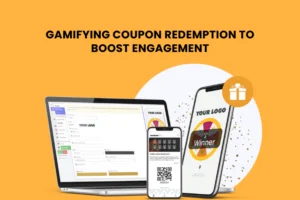
Best Practices for Customer Loyalty Management in American Businesses
- Leverage Data to Understand Customer Behavior
- Segment Your Audience
- Integrate Across All Channels
- Offer Meaningful Rewards
- Foster Emotional Connections
- Utilize Technology Effectively
- Communicate Regularly and Transparently
- Monitor, Measure, and Adapt
- Create a Community
- Ensure Legal Compliance
In the competitive landscape of American business, managing customer loyalty effectively is crucial for long-term success. Companies that excel in customer loyalty management not only retain customers but also enhance their brand reputation and drive sustainable growth. Here are some of the best practices for managing customer loyalty that U.S. businesses should consider to maximize their effectiveness.
1. Leverage Data to Understand Customer Behavior
Successful customer loyalty management starts with data. Use data analytics to track customer preferences, purchase patterns, and behavior. This insight allows you to tailor your loyalty programs and marketing strategies to meet the specific needs and desires of your customer base. Implementing a robust digital loyalty platform can provide the tools necessary for such data collection and analysis, enabling more personalized customer experiences.
2. Segment Your Audience
One size does not fit all when it comes to customer loyalty. Segment your customers based on their behaviors, demographics, and purchase history to create targeted campaigns that resonate with different groups. This personalized approach helps in crafting offers and rewards that are most likely to appeal to each segment, increasing the effectiveness of your loyalty initiatives.
3. Integrate Across All Channels
Ensure that your loyalty program is integrated across all customer touchpoints. Whether it’s in-store, online, via mobile, or through social media, your program should provide a seamless experience. Integration helps in maintaining consistency in customer interactions and rewards, enhancing the overall customer experience and reinforcing their engagement with the brand.
4. Offer Meaningful Rewards
Rewards should be valuable enough to motivate customers to participate. Consider what your customers value most—whether it’s discounts, exclusive access, free products, or unique experiences. For instance, a point-based loyalty program might work for a retailer, while a service-based business might benefit more from a tier system offering perks as customers reach higher levels of spending or engagement.
5. Foster Emotional Connections
Creating an emotional connection with your customers can turn them into loyal advocates for your brand. Engage customers with your brand’s story, values, and community involvement. This can be particularly effective in the USA, where consumers often align their purchasing decisions with their personal values and the social impact of their spending.
6. Utilize Technology Effectively
Adopting the right technology is key to managing a successful loyalty program. Digital loyalty programs, for instance, provide convenience and instant gratification that modern consumers expect. Technologies like mobile apps and integrated POS systems help streamline the process of accumulating points and redeeming rewards, making the program more attractive to users.
7. Communicate Regularly and Transparently
Keep your customers informed about the benefits and updates regarding your loyalty program. Regular communication via email, social media, and mobile notifications keeps your customers engaged and aware of their rewards and opportunities. Transparency about how the program works and what benefits they can expect builds trust and loyalty.
8. Monitor, Measure, and Adapt
Continuously monitor the performance of your loyalty program and be ready to adapt based on customer feedback and changing market conditions. Set clear metrics for success and use them to evaluate the program’s effectiveness. Regularly updating your program to fix issues and refresh stale elements can keep it relevant and appealing to participants.
9. Create a Community
Especially in the USA, where brand loyalty often extends into personal identities, creating a community around your brand can be a powerful loyalty booster. Invite customers to exclusive events, engage them on social media, and encourage them to share their experiences. This not only strengthens individual customer relationships but also builds a network of advocates who can attract new customers.
10. Ensure Legal Compliance
Finally, ensure that your loyalty program complies with all relevant laws and regulations in the USA. This includes privacy laws regarding the collection and use of customer data, as well as regulations specific to marketing and promotions.
Conclusion
Implementing these best practices in customer loyalty management can help American businesses not only retain customers but also turn them into brand ambassadors. By understanding and addressing the unique needs and preferences of their customers, companies can build deeper relationships and drive long-term success in today’s competitive environment.




